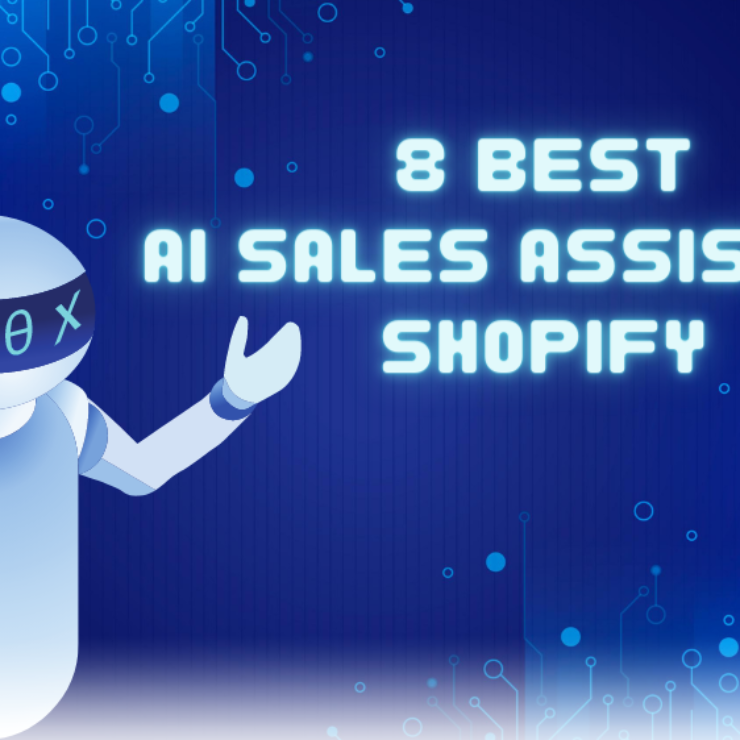Internet shopping has grown in popularity over the past few years. Nonetheless, the issue of cart abandonment has increased along with the popularity of online shopping. Many shoppers add products to their carts but abandon them when they navigate away from the page or become preoccupied. Businesses lose sales as a result, while buyers miss out on opportunities to buy the things they want.
We’ll look at employing a cart reminder pop-up to stop customers from forgetting their shopping carts when they arrive on the homepage in this blog post. How to boost sales with a cart pop-up reminder? Let’s check it out!
What is a cart pop-up reminder?
A cart pop-up reminder is a feature on e-commerce websites that displays a pop-up message reminding the customer about the items in their shopping cart. This reminder is designed to reduce cart abandonment rates by prompting the customer to return to their cart and complete the checkout process.
The pop-up reminder can appear in various formats, such as a notification, message, or even a window that enlarges the shopping cart icon. But the pop-up we are referring to today is an exit-intent pop-up, which is displayed when customers visit the homepage of a website.

The Power of Cart Pop-Up Reminders in Boosting Sales
Cart abandonment loses e-commerce companies $18 billion in sales income each year. That is an urgent matter! As content strategy writer, Meir Fox explains:
With $4 trillion worth of merchandise predicted to be abandoned in digital carts next year alone, cart abandonment has become a burning issue that e-commerce organizations can no longer afford to ignore.
There are many reasons for missing out on orders, as listed by the Baymard Institute:
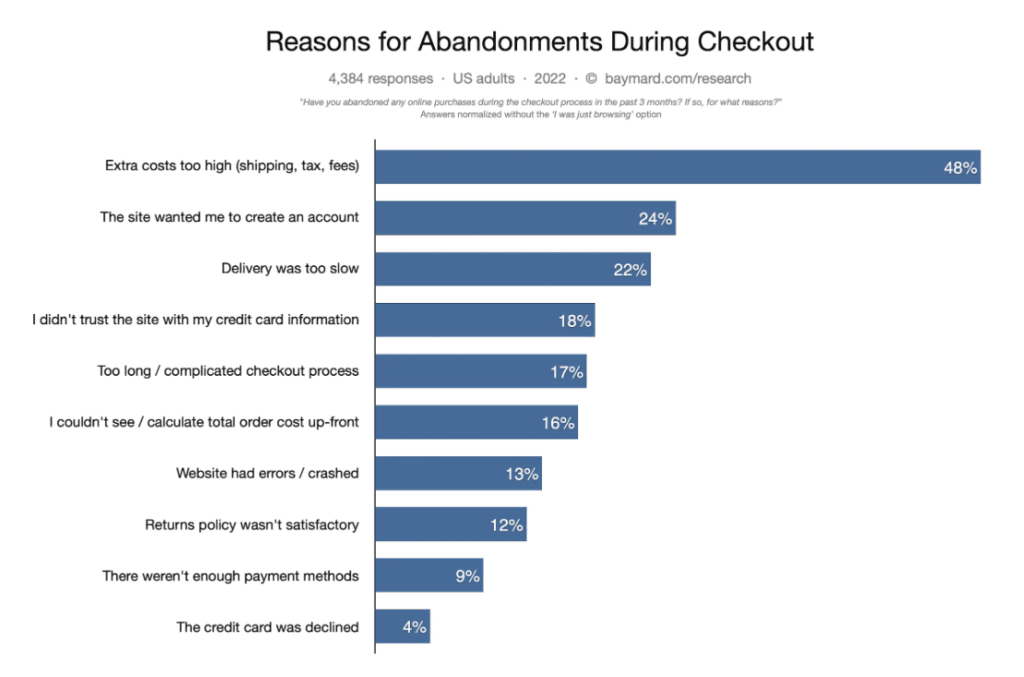
As you may be aware, many shoppers tend to abandon their carts or forget about items they’ve added to them. It’s important to remind customers of the items they’ve added to their carts, or simply jog their memory about a previous intention to purchase a particular item that was left un-purchased due to forgetfulness.
To reduce cart abandonment rates, some online stores have proactively implemented measures such as pop-up reminders. However, the effectiveness of these reminders can be hindered by the small size of the cart icon on many websites. That is why it may be a valuable method to build upon, and we will get into the specifics shortly.
Solutions for cart reminders
Save the contents of an abandoned cart in case the consumer returns in a few days. On the cart page, specify how long you will keep their selection. People will probably forget their choice when they return to your website. Greet the shopper with prior session goods, as well as changes in price or availability, so that the consumer is not shocked to encounter unexpected things during checkout.
In this article, we discussed a pop-up that is displayed immediately when customers access the website. Its purpose is to encourage customers to complete their purchases and reduce cart abandonment rates. Therefore, it is unnecessary to go through the steps of identifying its location since we already know it is placed on the homepage.
However, it is important to ensure that the pop-up is strategically placed on the homepage for maximum effectiveness. One way to achieve this is by placing it in a prominent location, such as in the center of the page or at the top of the page where it is easily visible to customers.
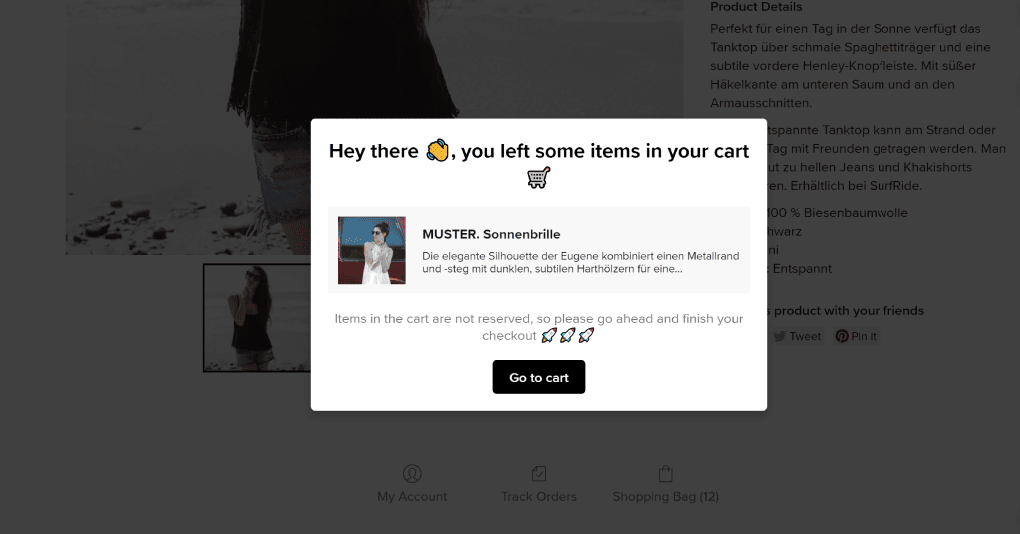
Additionally, it should be designed to be visually appealing and attention-grabbing, using contrasting colors or animations to draw customers’ attention to it. The wording of the pop-up should also be clear and concise, reminding customers of the items in their cart and encouraging them to complete their purchases. By carefully designing and placing the pop-up on the homepage, we can effectively encourage customers to complete their purchases and reduce cart abandonment rates.
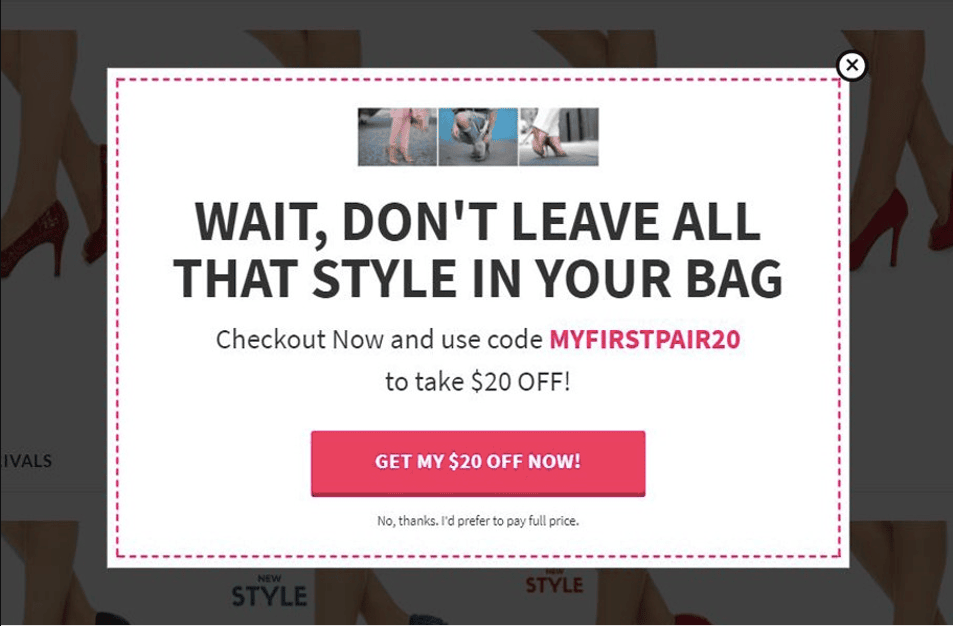
In addition to using pop-up reminders, another effective strategy to reduce cart abandonment is to develop promotions and incentives that encourage customers to complete their purchases.
For example, offering free shipping for orders over a certain amount or providing a discount code for first-time customers can be a powerful motivator to finalize a purchase. Additionally, creating a loyalty program that rewards repeat customers with exclusive discounts or early access to new products can also help increase customer retention and reduce cart abandonment rates. When developing promotions and incentives, it’s important to consider the target audience and their preferences, as well as the overall brand image and messaging.
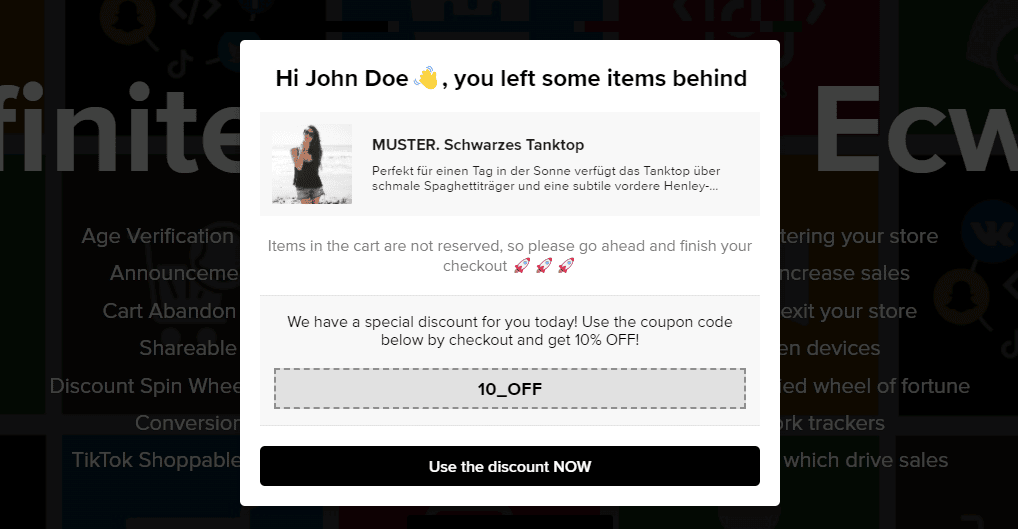
Implementing cart reminder pop-ups
Once you’ve identified the optimal timing and placement for your pop-ups, it’s time to implement them on your website:
- The first step is to design the pop-up itself, which should be eye-catching and communicate the message that the customer has items in their cart that need to be checked out.
- You should also include a clear call-to-action, such as “Proceed to Checkout” or “View Cart“, to make it easy for customers to take the desired action.
- Next, you’ll need to choose the right software or tool to display your pop-ups. Many e-commerce platforms have built-in pop-up tools, but you may need to use a third-party tool or hire a developer to create a custom solution.
- Once you’ve implemented your pop-ups, be sure to track their effectiveness using metrics such as click-through rates and conversion rates. This will help you refine your strategy over time and ensure that you’re getting the most out of your cart reminder pop-ups.
Conclusion
Overall, reducing cart abandonment rates is an essential task for any e-commerce business. In this article, we’ve discussed several strategies for tackling this issue, including optimizing the checkout process, improving website performance, developing incentives and promotions, and implementing cart reminder pop-ups.
By focusing on these areas and continually analyzing and adjusting our approaches, we can better understand why customers abandon their carts and take steps to prevent them. With these strategies in place, we can improve customer satisfaction, increase sales, and grow our business in the long run.




